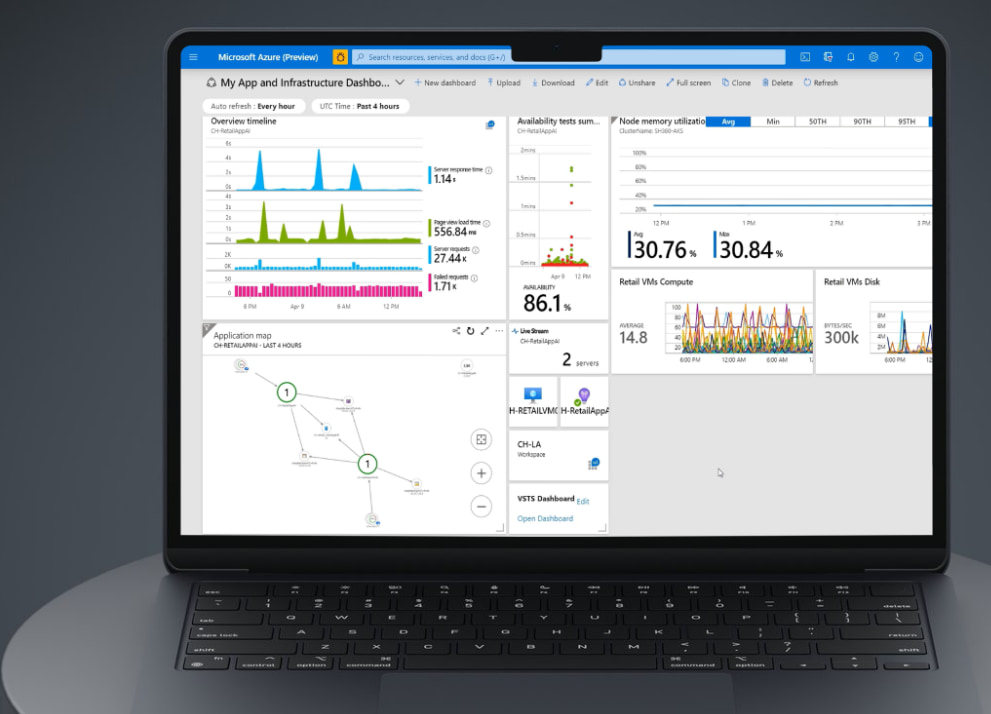System monitoring is no longer an “accessory” but has become a key ally for organizations committed to digital transformation. However, migrating from traditional control to advanced cloud detectability raises key questions: How can you ensure continuity when your applications live between your data center and the cloud? Which tools really provide comprehensive visibility without overwhelming you with useless alerts? And how can IT teams focus more on adding value to the business than on putting out fires on a daily basis?
With more than 15 years of experience working with companies in demanding sectors such as banking, retail, industry, and energy, we have learned that the secret lies in integrating advanced technology, such as Microsoft Azure's cloud offering, with processes and people aligned with business objectives.
Why the cloud has changed the rules of monitoring
The public cloud, and Azure in particular, have transformed traditional system monitoring paradigms. According to IDC, more than 70% of leading companies already operate critical parts of their monitoring from cloud services, achieving a 60% reduction in serious incidents and tangible operational savings. In fact, spending on cloud infrastructure has grown by 99.3% in the last year, now accounting for 64% of total IT infrastructure investment, proof of the definitive shift toward managed and cloud models by leading companies.
What gives the cloud an advantage over on-premises solutions?
- Total visibility, in real time: Azure Monitor and Log Analytics allow you to connect from on-premises servers to cloud microservices, offering centralized and customized dashboards.
- Smart alerts (no more alert fatigue): AI algorithms learn the normal operating patterns of each system and only notify you of what is truly critical.
- Scalability: Whether you manage a few machines or hundreds of global resources, Azure automatically adjusts monitoring based on demand.
- Native integrations with business apps: From SAP and NAV to modern container-based solutions, everything falls under the same umbrella of control.

Best practices for monitoring that makes a difference
- Monitor the entire value chain: Don't just check if it's “turned on.” Keep a close eye on critical processes, user experience, business flows, and security. Total visibility helps you anticipate and prioritize.
- Automate responses for urgent issues: Optimize your alerts and run automatic playbooks to resolve minor incidents and free up your IT team's time.
- Commit to multi-cloud/hybrid integration: More and more companies are operating resources in different clouds and on-premises. Centralizing monitoring prevents information gaps and cost overruns.
- Invest in training and support: Involve your team in the evolution of platforms and rely on partners with real experience to adapt monitoring to your business (not just the technology).
- Choose managed services when continuity matters: Delegating infrastructure management and advanced monitoring frees up internal resources and ensures that best practices and incident response evolve with your company.
Impact of advanced monitoring in business environments
In various sectors, organizations that have opted for advanced cloud monitoring solutions have seen significant improvements in the visibility of their operations and their ability to respond to incidents. By integrating tools such as Azure Monitor and centralized monitoring of critical systems—both in the cloud and on-premises—it is common to significantly reduce problem detection and resolution times, as well as anticipate potential operational bottlenecks.
This improvement in efficiency allows IT teams to focus their efforts on innovation and continuous optimization, rather than devoting resources exclusively to incident response.
Frequently asked questions about modern monitoring
Is it safe to monitor critical data in the cloud?
Yes. Azure complies with major international security standards (ISO, GDPR, SOC) and allows granular access controls. Implementing best practices and custom configurations is key.
What steps are involved in migrating my monitoring to the cloud?
Conduct a current audit, define key performance indicators (KPIs), prioritize critical apps, and plan a phased transition. Involve business and technical users from the outset.
Can my entire environment be monitored, even if it is hybrid?
No problem. Tools such as Azure Monitor offer connectors for cloud, on-premises, and third-party systems.
Would you like to know how to optimize your monitoring?
At Intelequia, we offer a no-obligation diagnostic consultation to review your current monitoring architecture and design the best roadmap to the cloud. We have helped companies like yours transform the visibility of their systems, anticipating problems before they happen.
Request more information
Find out how our cloud infrastructure services can help you simplify and accelerate your transition to Azure, optimizing the management and security of your critical environments.